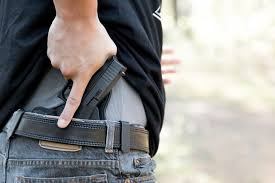In 1960, the Gallup organization ran a national survey in which they asked respondents whether they would support a ban on handguns. Not stricter licensing, not PTP, an absolute ban. By a margin of 60 percent, the respondents said ‘yes.’ Had we passed a gun-control law which had reflected this national survey, we would not be dealing with a public health issue known as gun violence today. And the reason that we are the only advanced country which suffers from this public health problem is that we are the only advanced country which gives law-abiding citizens the right to own handguns.
In 1975, two years before the ‘revolution’ at the NRA meeting in Cincinnati, when a more aggressive leadership began to shift away from supporting sports shooting to pushing armed, self-defense, this same survey found that the percentage of respondents who favored a ban on private handgun ownership had dropped to 41 percent. In 2002, the number was down to 32 percent and in 2016 it hit its lowest point – 23 percent.
Since I signed a non-disclosure agreement I am enjoined from identifying the gun company involved in this episode; let’s just say it was one of the biggest and certainly best-known gun companies in the United States – then and now. In 1985, I was part of a team which began putting together an incentive program for gun dealers who carried this company’s products, a strategy that was a response to the ‘invasion’ of European handguns; i.e., Beretta, Glock and Sig.
Before we designed the program, the company engaged a consulting firm to conduct a survey of potential customers, the first such survey the company had ever done. It turned out that roughly two-thirds of everyone who participated in the survey believed that law-abiding Americans should have the right to own a handgun. This response cut across every demographic (gender, race, income,) category, every geographic area, every other way in which the respondent population was sliced and diced. And non-gun owners were just as willing to support the idea of law-abiding gun ownership as were the respondents who said they owned guns.
Anyone who thinks that John Lott created a national ‘movement’ for armed, self-defense with the publication in 1998 of More Guns, Less Crime, needs to spend a little time thinking about the Gallup surveys mentioned above as the results of a national, marketing survey conducted in 1985. The purpose of this column is not to validate John Lot’s work; in fact, I have published a very clear critique of his argument which can be downloaded here.
The issue isn’t whether John Lott is a stalking horse for the gun industry’s desire to sell more guns. The issue is whether my friends in the gun-control community really understand or even want to discuss how to deal with the fact that, like it or not, America is truly a gun culture. Our belief in using a gun to commit ‘virtuous violence’ wasn’t invented by the NRA or by John Lott, and sad to say, the idea that guns are more of a benefit than a risk isn’t just a fantasy confined to the lunatic fringe.
I keep seeing survey after survey which shows that most people now own guns is for self-defense. Are they afraid of being victims of a violent crime when the crime rate has dropped by more than half over the last twenty years? Are they afraid they might be sitting in a hi-rise office building when a 727 controlled by a terrorist slams into the 50th floor? Are they afraid they won’t be able to own a gun?
I have yet to see a single, gun-control group try to create a narrative that acknowledges these fears. After all, it’s much easier to demonize John Lott and the NRA than to sit down and figure out feelings that are not necessarily based on reality, but are nevertheless strongly resistant to change. This task remains to be done.

 If this bill is enacted into law, each state would be required to honor a concealed carry permit issued by another state, even if the permit holder’s state of residence has much lower standards or no permit requirement at all for those carrying concealed weapons. This would be a dangerous law, as it would allow people to seamlessly carry guns across state lines, regardless of the vetting and training required by the state issuing the permit.
If this bill is enacted into law, each state would be required to honor a concealed carry permit issued by another state, even if the permit holder’s state of residence has much lower standards or no permit requirement at all for those carrying concealed weapons. This would be a dangerous law, as it would allow people to seamlessly carry guns across state lines, regardless of the vetting and training required by the state issuing the permit.